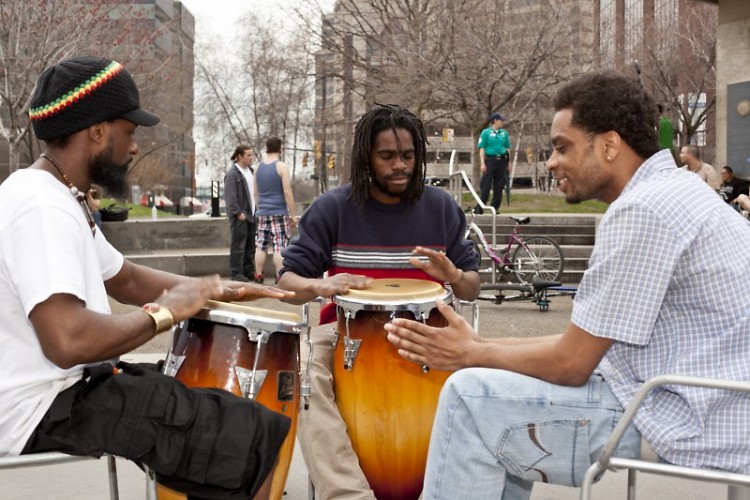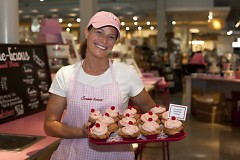Written by Kristopher Larson, AICP
Great cities can be experienced in many different ways. Upon approach, we can be visually awed at the sheer stature and silence of a skyline. Buildings stand proudly, lights twinkling, their silhouettes combining to form a portrait of a community that is as unique as a fingerprint. Within a city, other senses engage. Eyes closed, we bathe in a cacophony of sound, a cornucopia of tastes, a bouquet of scent. Laughter, lemoncello, lavender. Sirens, strawberries, sage. There is beauty for every beholder, a song for every ear, a quench for every craving, a whiff for every olfactory. Great cities deliver a spectrum of experiences, and this diversity of experiential options translates into one of the most sought-after goals of city building: vibrancy. In vibrancy, it’s all about options. Thousands of people, out and about, looking to fulfill their personal desires. Humans are inherently social creatures – and vibrancy becomes a comforting pinnacle of achievement, as brushing elbows makes us feel more safe, assured and anticipatory of what else we might find.
The task of growing vibrancy in a downtown area can be understood using the basics of supply and demand. In great cities, the options for sensory enjoyment – whatever your pleasure happens to be – are so numerous that you can literally find anything, whether it is vegan Indian food, fresh cut flowers, an outdoor yoga class or an oddly-sized digital camera battery. All of these goods and services constitute the provisional supply side. Some well-intentioned entrepreneur is betting that they can make a living selling you the stuff you want. For them to do so involves taking a risk. For small businesses, this risk often amounts to wagering their personal or family savings – all so that you can enjoy an artisanal cupcake when the afternoon craving hits you. And you, of course, represent demand. That baker is hoping that demand amounts to more than just you, as they’ll need lots and lots of people to fawn after their frosting to build a successful business.
In city building, demand evolves as the uses within a city expand and evolve. To streamline, consider the primary reason for a person choosing to be in a particular place. If they are there to conduct business, their primary focus is connecting with other people to engage in commerce. If someone calls the city home, they prioritize lifestyle needs. Just visiting? Then you’re probably looking for good times and great eats. The purpose of your presence shapes your regular needs. In economics, we call this spending power, and different types of people deliver different amounts of spending on different types of purchases. While we all have stuff we need to buy, there’s also stuff that people want to buy: called discretionary spending. Where discretionary demand increases and diversifies to a level that can sustain our cupcake baker, her business will succeed. As such, supply is a reflection of demand – and the experiences offered in your city echo the desires of your community.
So to grow vibrancy, we need more people – and different kinds of people – that need different things. The greater the aggregate needs, the greater the demand. This isn’t a chicken and egg scenario. Greater demand reduces the risk involved in expanding supply – such as opening a new business – which then expands access to a more diverse set of sensory experiences. Downtown Grand Rapids, Inc. makes investments in the community that create opportunities for people to live, work and visit our downtown. The more people we have, the most experiences that can be supported. The more people seeking experiences, the more vibrancy we experience. Growing demand is foundational to economic development, as improvements to demand enables the incremental creation of business opportunities, which, of course, means we can get our cupcakes.
There are also ways to augment the foundational demand drivers (residents, workers and visitors) through short term injections of vibrancy, the incorporation of artistic expression and situational design alternatives. These involve purposefully repositioning people to be more numerous, and of course, visible. A Jackson Pollack behind in a dark room stimulates only those in the room, while a Juame Plensa in open space attracts and entertains the denizens. Retrofitting the public realm to accommodate people-oriented uses frees us of our cubicles and puts us back in the space where vibrancy lives. Lastly, grand events and civic celebrations enable communities to come together to laugh and smile, and provide the demand curve with a short term adrenaline rush through humorists, paper planes and jazz. These are ways that we can simply reshuffle the deck to improve upon the image of the city, showcasing its personality in ways that skyline cannot, and allowing it to truly be and expression of the people that call it home.
The Rapidian, a program of the 501(c)3 nonprofit Community Media Center, relies on the community’s support to help cover the cost of training reporters and publishing content.
We need your help.
If each of our readers and content creators who values this community platform help support its creation and maintenance, The Rapidian can continue to educate and facilitate a conversation around issues for years to come.
Please support The Rapidian and make a contribution today.



